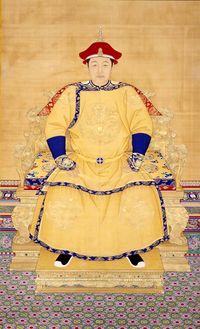الامبراطور شونژي
| ||||||||||||||||||||||||||||||||||||||||||||||||||
| ||||||||||||||||||||||||||||||||||||||||||||||||||
شونژي الامبراطور (15 مارس 1638 – 5 فبراير 1661) كان ثالث أباطرة أسرة تشينگ وأول امبراطور تشينگ يحكم الصين، من 1644 حتى 1661. A committee of Manchu princes chose him to succeed his father, Hong Taiji (1592–1643), in September 1643, when he was five years old. The princes also appointed two co-regents: Dorgon (1612–1650), the 14th son of the Qing dynasty's founder Nurhaci (1559–1626), and Jirgalang (1599–1655), one of Nurhaci's nephews, both of whom were members of the Qing imperial clan.
From 1643 to 1650, political power lay mostly in the hands of Dorgon. Under his leadership, the Qing Empire conquered most of the territory of the fallen Ming dynasty (1368–1644), chased Ming loyalist regimes deep into the southwestern provinces, and established the basis of Qing rule over China despite highly unpopular policies such as the "hair cutting command" of 1645, which forced Qing subjects to shave their forehead and braid their remaining hair into a queue resembling that of the Manchus. After Dorgon's death on the last day of 1650, the young Shunzhi Emperor started to rule personally. He tried, with mixed success, to fight corruption and to reduce the political influence of the Manchu nobility. In the 1650s, he faced a resurgence of Ming loyalist resistance, but by 1661 his armies had defeated the Qing Empire's last enemies, seafarer Koxinga (1624–1662) and the Prince of Gui (1623–1662) of the Southern Ming dynasty, both of whom would succumb the following year. The Shunzhi Emperor died at the age of 22 of smallpox, a highly contagious disease that was endemic in China, but against which the Manchus had no immunity. He was succeeded by his third son Xuanye, who had already survived smallpox, and who reigned for sixty years under the era name "Kangxi" (hence he was known as the Kangxi Emperor). Because fewer documents have survived from the Shunzhi era than from later eras of the Qing dynasty, the Shunzhi era is a relatively little-known period of Qing history.
"Shunzhi" was the name of this ruler's reign period in Chinese. This title had equivalents in Manchu and Mongolian because the Qing imperial family was Manchu and ruled over many Mongol tribes that helped the Qing to conquer China. The emperor's personal name was Fulin, and the posthumous name by which he was worshipped at the Imperial Ancestral Temple was Shizu (Wade–Giles: Shih-tsu; Chinese: 世祖).
. . . . . . . . . . . . . . . . . . . . . . . . . . . . . . . . . . . . . . . . . . . . . . . . . . . . . . . . . . . . . . . . . . . . . . . . . . . . . . . . . . . . . . . . . . . . . . . . . . . . . . . . . . . . . . . . . . . . . . . . . . . . . . . . . . . . . . . . . . . . . . . . . . . . . . . . . . . . . . . . . . . . . . . .
الخلفية التاريخية
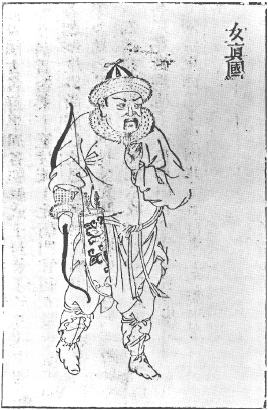
يصبح امبراطوراً
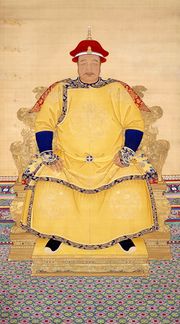
وصاية دورگون (1643-1650)

شبه امبراطور
الاستقرار في العاصمة

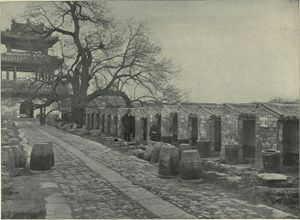
فتح الصين



الانتقال والحكم الشخصي (1651–1661)
التطهير من عصابة دورگون
السياسة الطائفية ومكافحة الفساد
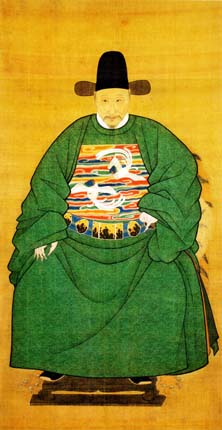
. . . . . . . . . . . . . . . . . . . . . . . . . . . . . . . . . . . . . . . . . . . . . . . . . . . . . . . . . . . . . . . . . . . . . . . . . . . . . . . . . . . . . . . . . . . . . . . . . . . . . . . . . . . . . . . . . . . . . . . . . . . . . . . . . . . . . . . . . . . . . . . . . . . . . . . . . . . . . . . . . . . . . . . .
التخوم ودافعو الجزية والعلاقات الخارجية

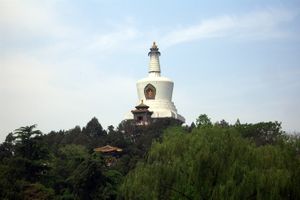
الحملات المتواصلة ضد مينگ الجنوبية

الشخصية والعلاقات
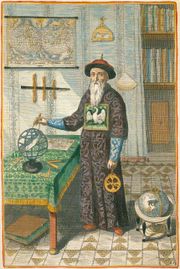
الوفاة والخلافة

الجدري
وصية مزورة
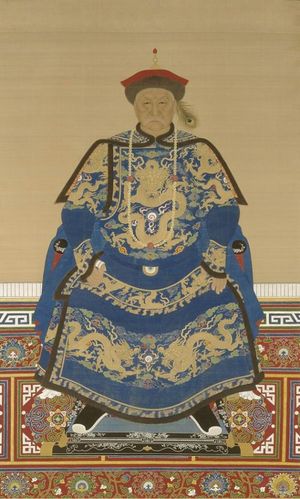
ذكراه

In fiction and popular culture
- Portrayed by Yan Kun, Chen Weichen, Wang Peiwen, and Li Yifan in Xiaozhuang Mishi (2003)
- Portrayed by Tang Yinuo and Daichi Harashima in Da Qing Fengyun (2006)
- Portrayed by Jung Yun-seok in Blooded Palace: The War of Flowers (2013)
انظر أيضاً
- Chinese emperors family tree (late)
- Chronology of the Shunzhi reign
- List of emperors of the Qing dynasty
. . . . . . . . . . . . . . . . . . . . . . . . . . . . . . . . . . . . . . . . . . . . . . . . . . . . . . . . . . . . . . . . . . . . . . . . . . . . . . . . . . . . . . . . . . . . . . . . . . . . . . . . . . . . . . . . . . . . . . . . . . . . . . . . . . . . . . . . . . . . . . . . . . . . . . . . . . . . . . . . . . . . . . . .
الهامش
- ^ Wakeman 1985.
- ^ Zarrow 2004a, passim.
- ^ في 1951 Italian scholar Luciano Petech was the first to hypothesize that these emissaries came من طرفان، وليس من هند المغل (Petech 1951, cited in Lach & van Kley 1994, plate 315). Kim 2008, p. 109 discusses this Turfan embassy in some detail.
- ^ Chang 2007, p. 86.
أعمال مذكورة
الامبراطور شونژي وُلِد: 15 مارس 1638 توفي: 5 فبراير 1661
| ||
| ألقاب ملكية | ||
|---|---|---|
| سبقه Hong Taiji |
امبراطور أسرة تشينگ 1643–1661 |
تبعه كانگشي الامبراطور |
| سبقه چونگژن الامبراطور |
امبراطور الصين 1644–1661 | |
